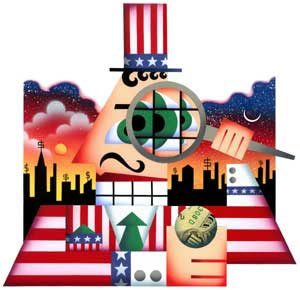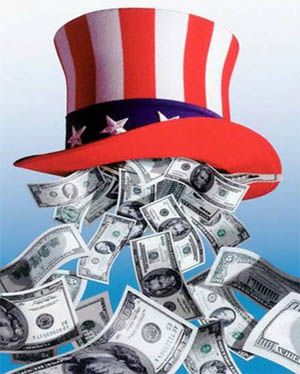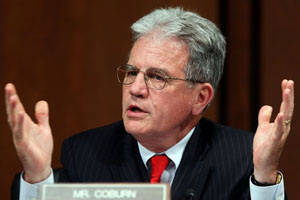(WASHINGTON, D.C.) – A billionaire’s fantasy island, Emmy award winning producers, Goldman Sachs, Broadway music from Hollywood, Starbucks, and even dolphins benefited from a tax credit intended to help struggling communities and lower income Americans seeking new opportunities.
“Banking on the Poor,” a new report released today by Senator Tom Coburn (R-OK) reveals the federal New Markets Tax Credit program is benefiting big banks and private investors that are claiming more than $1 billion of the credit annually.
The program was created to spur new markets, but is instead subsidizing the same old companies and corporations in little need of taxpayer assistance, like Wall Street banks and fast-food chains and luxury hotels. It is also providing financing for unnecessary and silly projects such as a sculpture in the desert, a vintage car museum, and doggie days cares. In at least one case, a project supported with a New Markets Tax Credit is threatening to bankrupt an entire town and eliminate jobs, including the entire police department.
 “The New Market Tax Credit is a reverse Robin Hood scheme paid for with the taxes collected from working Americans to provide pay outs to big banks and corporations in the hope that those it took the money from might benefit,” stated Senator Coburn. “When government picks winners and losers, the losers usually end up being taxpayers. Washington should reduce federal taxes on working Americans and all business owners who create jobs by eliminating tax earmarks, loopholes, and giveaways like the New Markets Tax Credit.”
“The New Market Tax Credit is a reverse Robin Hood scheme paid for with the taxes collected from working Americans to provide pay outs to big banks and corporations in the hope that those it took the money from might benefit,” stated Senator Coburn. “When government picks winners and losers, the losers usually end up being taxpayers. Washington should reduce federal taxes on working Americans and all business owners who create jobs by eliminating tax earmarks, loopholes, and giveaways like the New Markets Tax Credit.”
The New Markets Tax Credit program was expected to steer private financing into low-income communities to help create jobs. Yet, virtually every neighborhood, from Beverly Hills to the Hamptons, could qualify for the program. “As a result of the definition of qualified low-income communities, virtually all of the country’s census tracts [neighborhoods and communities] are potentially eligible for the NMTC,” according to the nonpartisan Congressional Research Service.[i]
 While some of the projects are well intended, like health clinics, it is still difficult to measure if these tax expenditures are truly helping those seeking a hand up or simply subsidizing banks, corporations, and others companies that are already succeeding.
While some of the projects are well intended, like health clinics, it is still difficult to measure if these tax expenditures are truly helping those seeking a hand up or simply subsidizing banks, corporations, and others companies that are already succeeding.
The program duplicates over 100 other federal economic development efforts. There are at least 23 community development tax expenditures costing taxpayers over $10 billion annually and 80 overlapping discretionary programs costing $6.5 billion annually, 28 of which are specifically designed to spur growth in new markets. Because of this redundancy, many projects and corporations are double dipping on taxpayers—receiving multiple federal subsidies through other grant programs and tax giveaways. Furthermore, it is unclear which of these best meets the overlapping goals, or if any of them spur more economic growth than policies encouraging private investments that do not spend taxpayer money.
A separate Government Accountability Office report issued today, also critical of the New Markets Tax Credit program, revealing:
• The fees charged by the CDEs reduced the amount of assistance provided to low-income community projects by $619 million (7.1 percent) from 2011 to 2012;
• A majority of NMTC-financed projects utilize more than one source of public funding, despite the purpose of the tax credit being to leverage private investment;
• Nearly two-thirds (62 percent) of New Markets projects received other public funding from 2010 to 2010; and
• New Markets investors are able to claim the tax credit on the equity provided by the other public sources.

